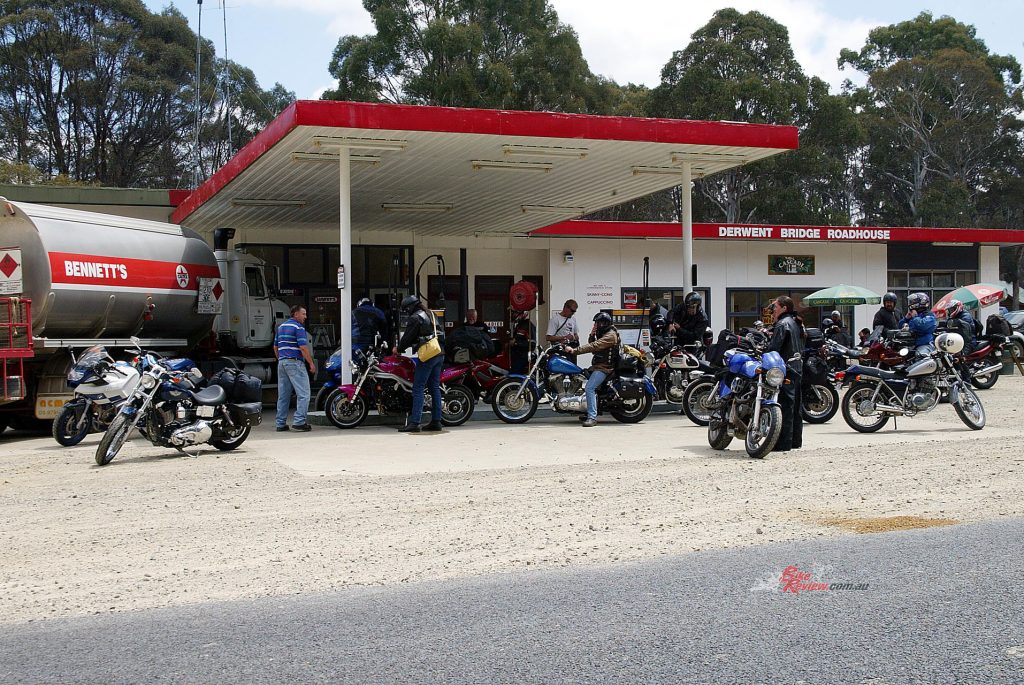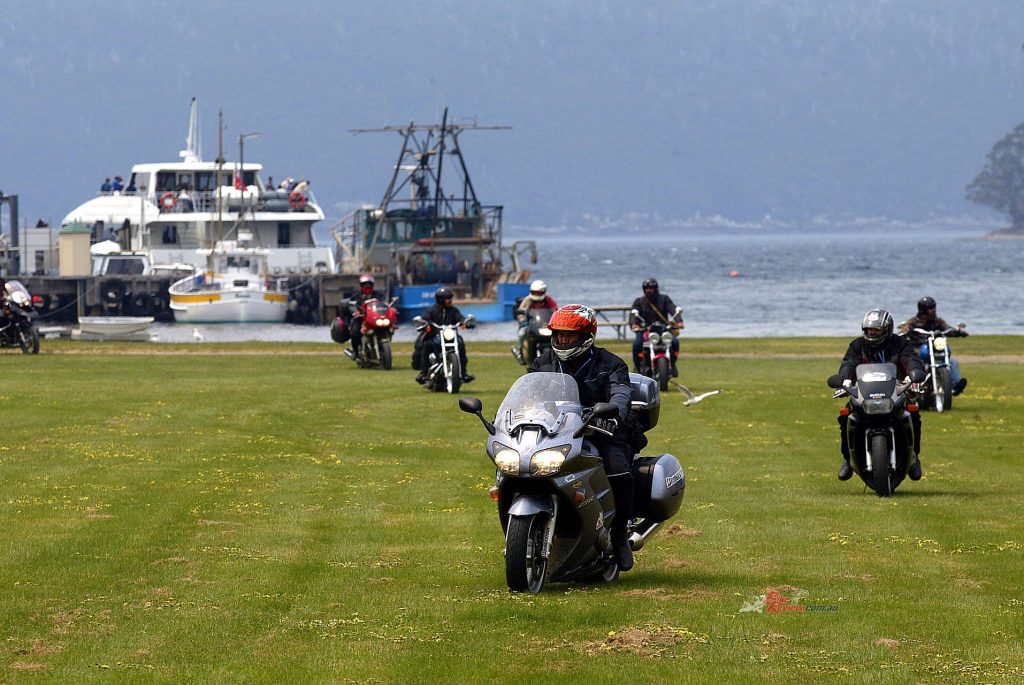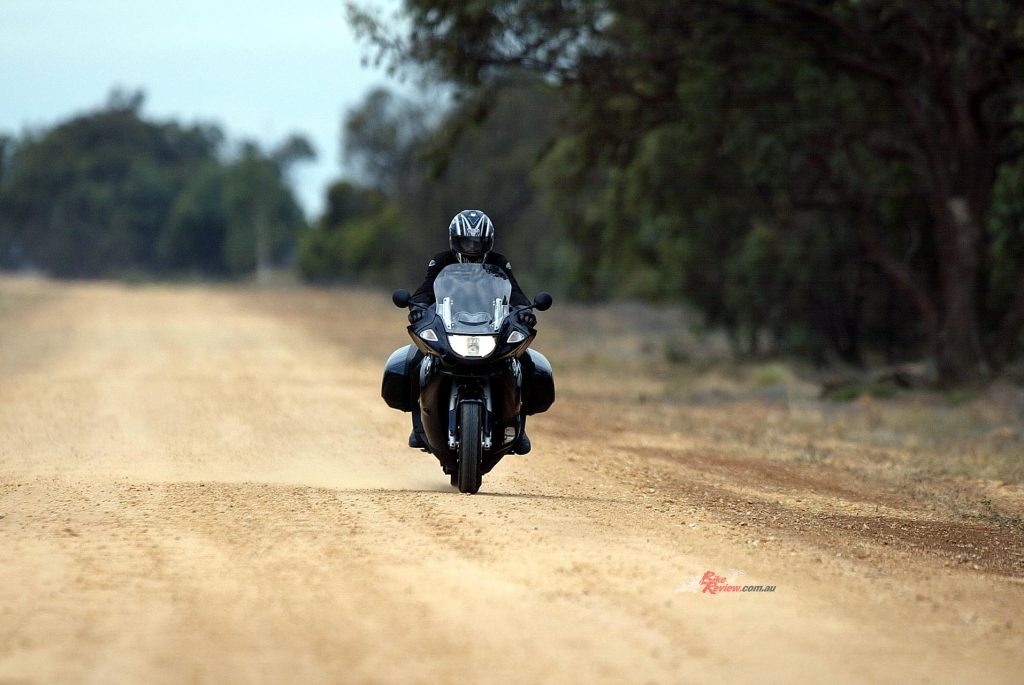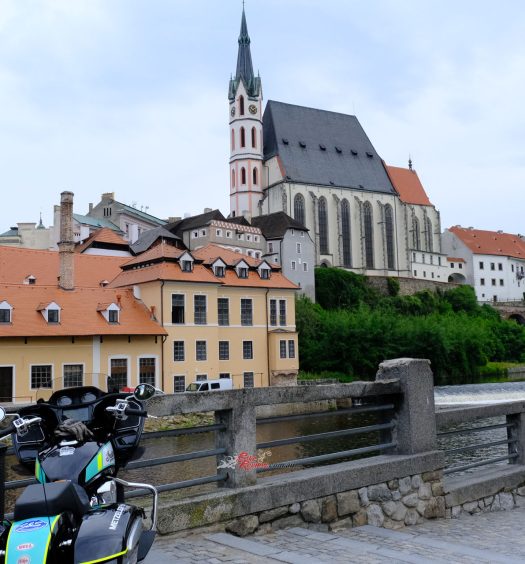Which Side is the Right Side On The Road? And how was it determined in the first place? The Bear answers the questions and fills us in on some interesting history on the side...
We all know that Britons drive (ride) on the left because driving their carriages that way left their sword hand free to deal with threats like oncoming highwaymen, and continue to do so out of a respect for tradition….
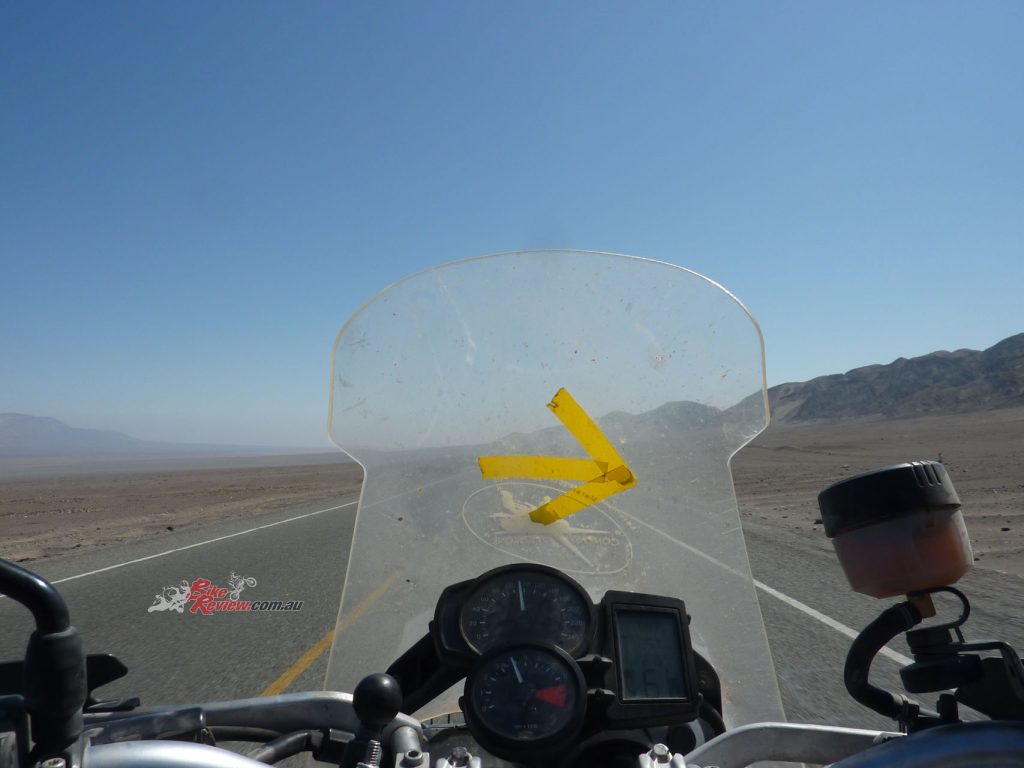
Some motorcycle touring companies, like Compass in this case, mark bikes to remind riders which side of the road they should use.
In turn, the European standard of driving on the right was initiated by Napoleon, while Americans drive on the right because Henry Ford put the Model T’s steering wheel on the left.
Right? No, wrong. All four.
Before you get hysterical, let’s get historical. Australian historian M. G. Lay in his book Ways of the World has traced the first regulation regarding the side of the road on which one was to travel all the way to the Chinese bureaucracy of 1100 BC. The Book of Rites stated: “The right side of the road is for men, the left side for women and the center for carriages.” This Western Zhou dynasty rule, he notes, applied only to the dynasty’s wide official roads and was “more concerned with protocol than avoiding head-on collisions.” Presumably it also only applied to each lane of roads with at least two lanes, also to avoid head-on collisions.
“Archaeologists are confident that the Romans drove carts and wagons on the left, and it is known that Roman soldiers always marched on the left”…
Closer to home, there is good evidence that a ‘keep to the left’ rule applied from at least a couple of hundred years BCE. Archaeologists are confident that the Romans drove carts and wagons on the left, and it is known that Roman soldiers always marched on the left. Mind you, it took a millennium and a half for this rule of the road to be officially sanctioned. In 1300 AD Pope Boniface VIII declared that all pilgrims travelling to Rome should keep to the left.
You might think that Britain stuck loyally with the Roman standard, reinforced by Il Papa’s ruling, and that this explains their staying left. Not quite; it took more than another 600 years for it to be made official, and there were no swords or highwaymen involved. The reason was traffic congestion in 18th century London, which led to a law being passed to make all traffic on London Bridge keep to the left in order to reduce collisions. This rule was incorporated into the Highway Act of 1835 and was adopted throughout the Empire.
In 1300 AD Pope Boniface VIII declared that all pilgrims travelling to Rome should keep to the left…
What about Canada?
But wait. Canada was part of the British Empire, but Canuks drive on the right, don’t they? Ah well, not all of Canada always belonged to the Empire, to start with. The provinces of Ontario and Quebec at one time were a French colony, and have therefore always driven on the right side of the road. The rest of Canada drove on the left, like the UK, until the 1920s (1947 in Newfoundland) when they switched to right. It was not to accommodate Ontario and Quebec but automobile drivers, who were by then buying American rather than British cars – and the US vehicles had their steering wheels on the left. Among other things, this made overtaking considerably safer when you drove on the right.
Was Ford responsible?
Aha! Wasn’t it Henry Ford who standardised the Model T with the steering wheel on the left? Yes, it was. You could, therefore, say that Ford was responsible for Canadians right’-side habit. But in the US, driving on the right goes back much further than Ford. Not only does traffic on the right predate cars, it predates the establishment of the United States. The “ship of the prairie”, the Conestoga wagon was key. First built in Conestoga, Pennsylvania, the wagons were originally developed to carry farm produce and other goods to markets in Philadelphia, one of the biggest cities in the colonies.
Because most people are right-handed, Conestoga wagons had the brake on the left side, close to the wagon driver’s right hand when he walked alongside, toward the middle of the road with the wagon to his right.
New York, New York…
Eventually, there was so much traffic between Lancaster County, Pennsylvania, and Philadelphia that America’s first major highway was created. The Philadelphia and Lancaster Turnpike Road opened in 1795. Among the rules written into its charter was that all traffic had to stay to the right – almost certainly to match the Conestoga wagons. By 1804, the habit was so widespread that New York dictated that traffic stay to the right on all roads and highways, becoming the first state to enact such a law.
It was more than a hundred years later, in 1908, that Ford Motor Co. put the steering wheel on the left side of the ubiquitous Model T. Effectively, Ford was just responding to driving habits that had been established and legislated long before.
Better get a Lawyer, son…
What about Europe, then? Why didn’t the papal injunction keep folks driving on the left? Napoleon did have something to do with the change, but he did not originate it. That is down to Maximilien Robespierre, the lawyer who was at least partly responsible for the 18th-century “Reign of Terror” which saw many thousands face the guillotine. As a poke in the eye to the aristocrats whose carriages had long monopolised the left side of the road, he also dictated that everyone should now use the right-hand side.
The spread of this policy, however, is often said to be due to the orders of Napoleon as his armies conquered Europe. You can find some evidence for this if you look at a map of the Napoleonic empire in 1812; all the countries it covered ended up driving on the right. But there is one nation that was neither a subject nor ally of Napoleon, namely Sweden which drove on the left until one day in 1967 when drivers there switched to the right.
Read previous editions of Bear Tracks here... and Follow the Bear tracks here…
Russians, meanwhile, were already driving on the right in 1709 according to a Danish envoy. Empress Elizaveta Petrovna made it law in 1752, long before Napoleon crossed the border for his cold reception. Japan on the other hand gets its left-hand preference from the British. When the country opened up in the Meiji era (1868-1912), Japan called on the UK to assist in its industrial development. England provided technical and industrial expertise, and that included automotive technology and usage.



